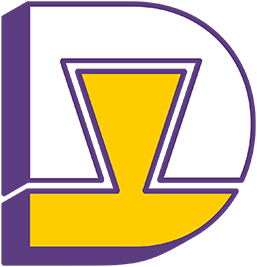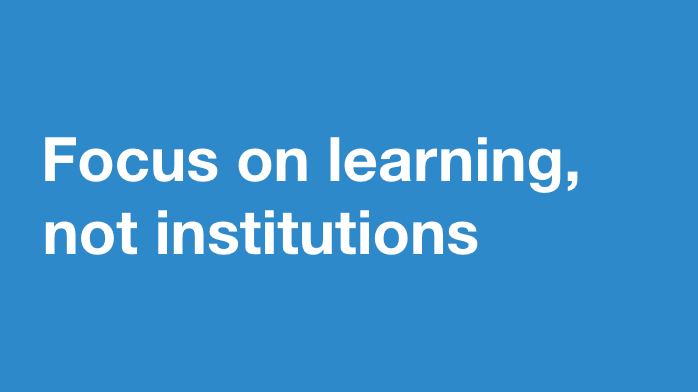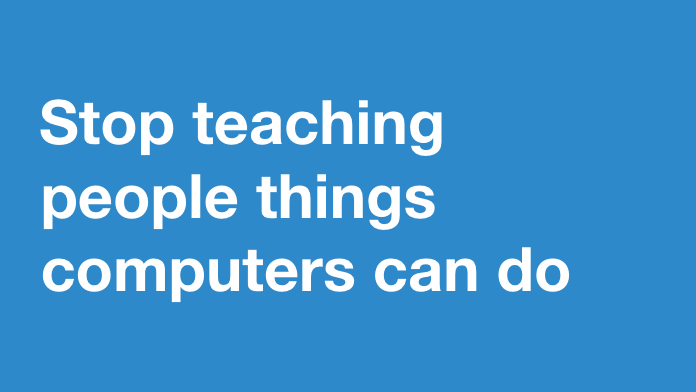Resources Index
-
Brief Setter for 2023-24: Kangan Arora
We are excited to announce that the Design Ventura 2023-24 brief setter is Kangan Arora, a South London-based designer specialising in textiles, though she has designed everything from websites to chocolate packaging!
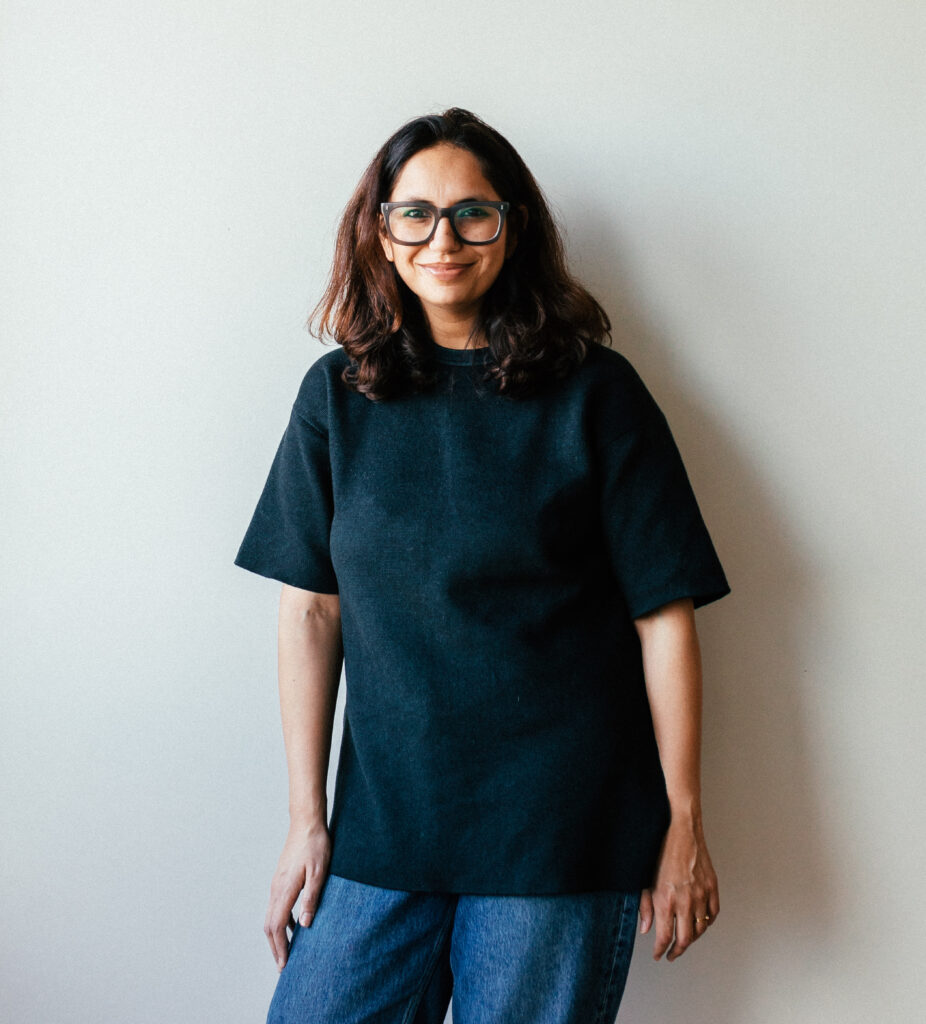
Kangan Arora, photo credit Taran Wilkhu @taranwilkhu Kangan works with and is inspired by communities across the world, from her students and colleagues at Central Saint Martins College of Art and Design, to her fellow creatives and design experts with whom she staged an exhibition in Japan in 2020. Her favourite source of inspiration is the rainbow of colours, geometries, and pattern applications of the Indian visual vernacular.
While her patterns are often abstract, Kangan is a designer, so her work is rooted in the practical – she constantly collects and experiments with different pigments and print processes. With so much to draw on it’s no surprise that she has designed a huge range of products including soft furnishings, acoustic panels, and socks. She has also worked with a variety of brands and institutions including TATE, Heal’s, Floor_Story, and IKEA.
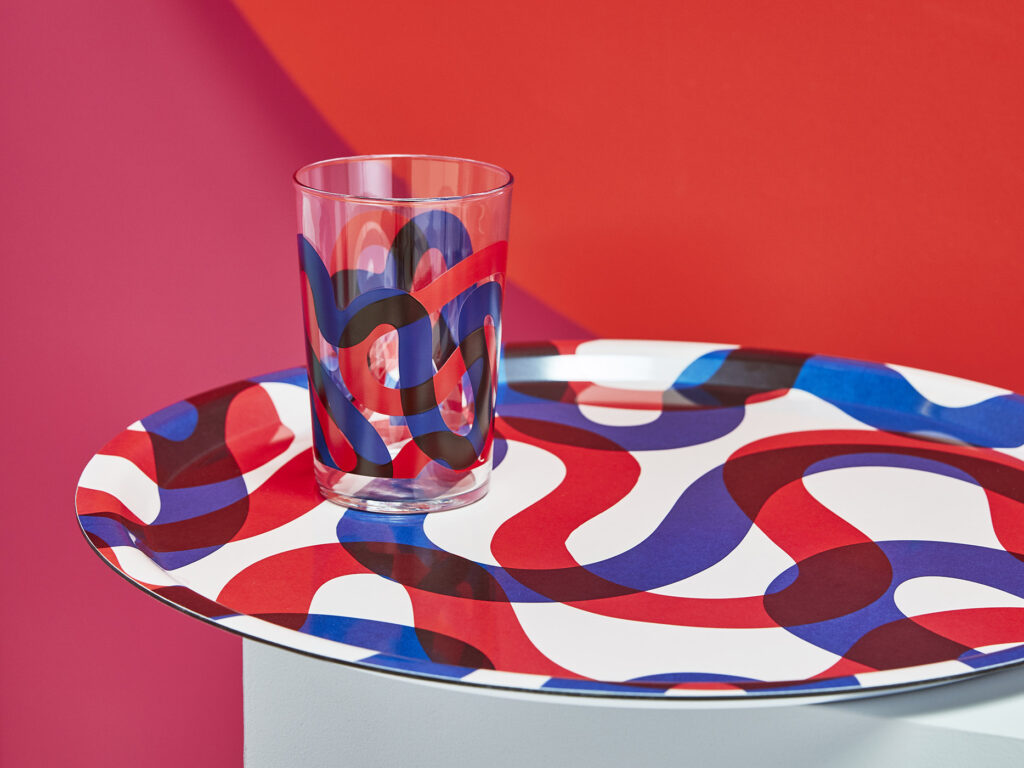
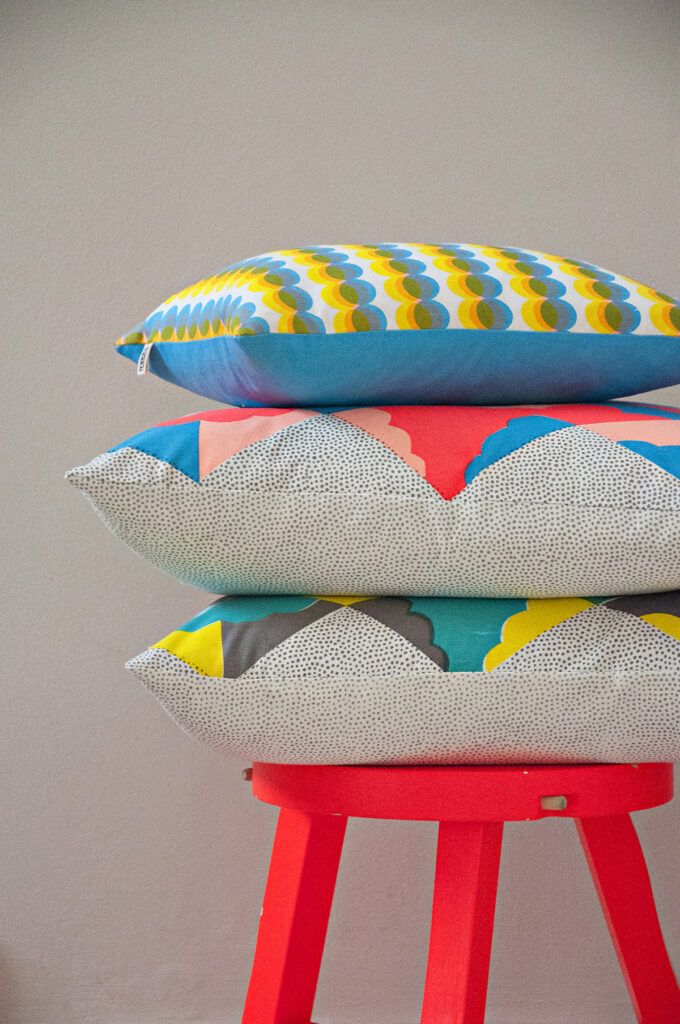
Two things are central to Kangan Arora’s work: colour and community. That’s why this year’s Design Ventura brief asks you to draw on one or both of these themes when designing your product for the competition. Watch the video below to find out more about Kangan’s work and the Design Ventura brief:
Even though Kangan’s work covers a huge range of product types, she always has a unique and identifiable personal style. We suggest that for your own project, you start by thinking about how colour and community are present in your own life – this will ensure that your ideas are grounded and original. From here, we encourage you to unleash your creativity. Seek out other designers who incorporate colour and community in their work. You might be surprised how many different ways these themes can be incorporated!
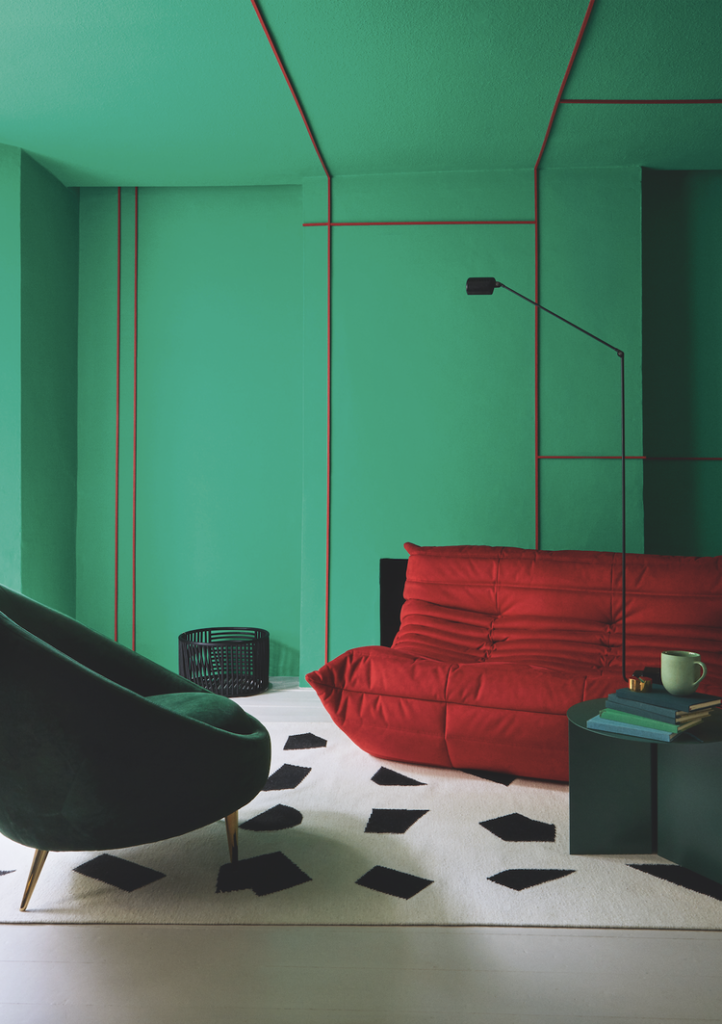
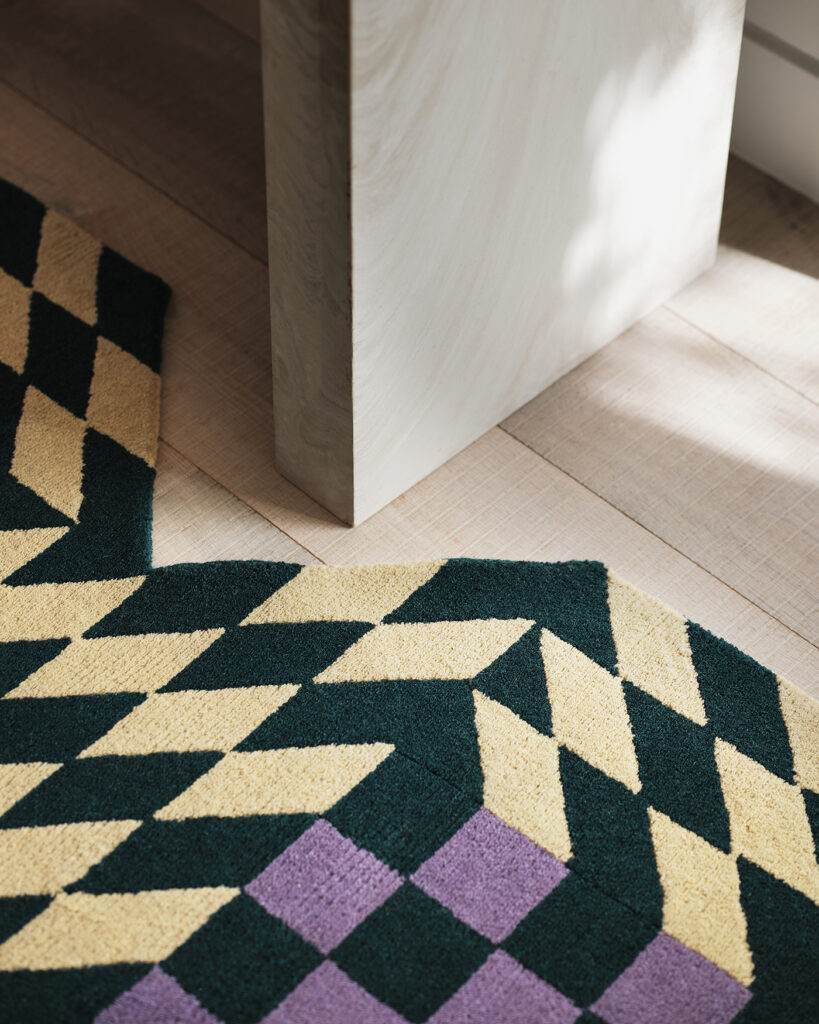
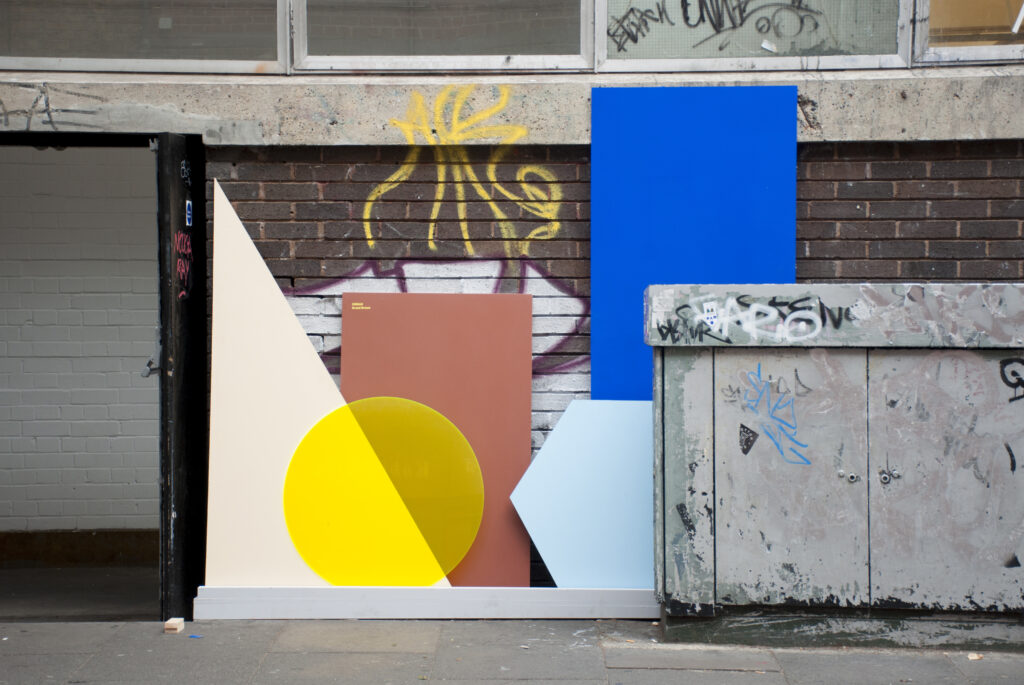
Don’t forget to think about all aspects of your product: how it looks, feels, and functions. You could take inspiration from Kangan Arora’s portfolio of packaging and branding designs for ideas on how to present your product as it deserves, in a way that will appeal to your chosen target market.
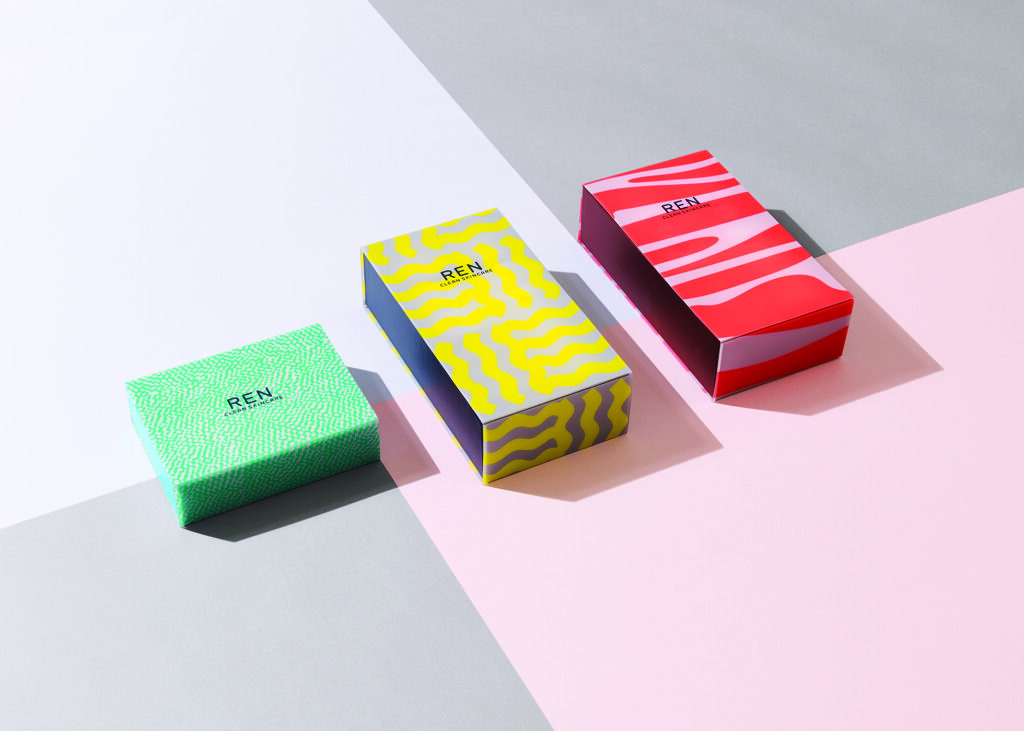
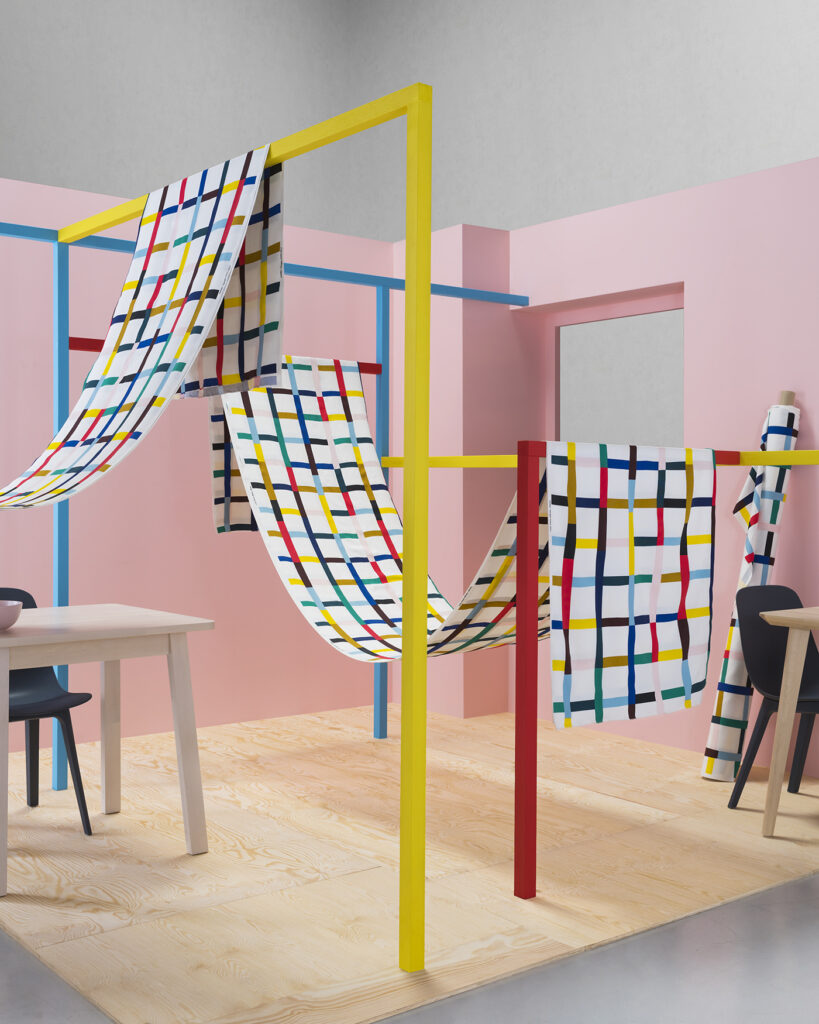
Kangan is a lecturer at Central Saint Martins, which is part of the University of London, so she knows how to help students get creative. Watch the video below for some of her top tips when producing your design, from idea generation to final pitch:
We are thrilled to welcome Kangan Arora to Design Ventura this year. As well as setting your brief, she will be one of our expert judges, helping to choose this year’s winning idea at the Pitching Day in March 2024. We can’t wait to see your ideas!
-
Design Ventura 2022-23 Brief Setter: Selasi Setufe MBE
We are pleased to announce that the Design Ventura 2022-23 brief setter is artist and designer Selasi Setufe.
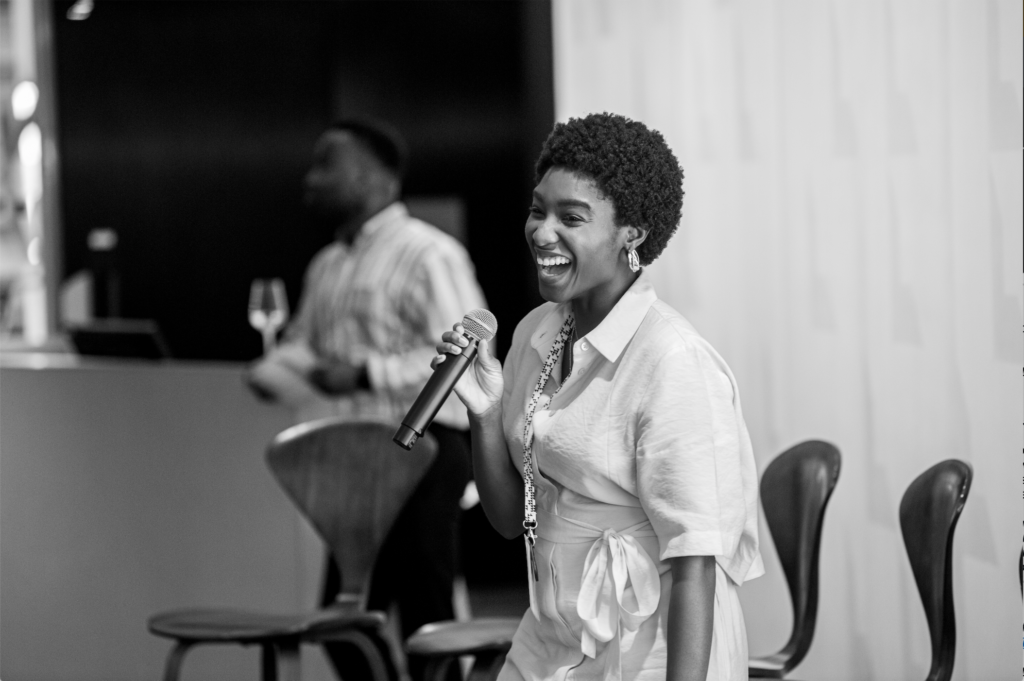
Selasi Setufe, Photo credit Julian George @chefsignatures @madebyhumansstudio Selasi Setufe is an architect with an interest in exploring socially responsive approaches to design, architecture and placemaking. She is co- director of Black Females in Architecture, an organisation which advocates for diversity, race and gender equity in Architecture, Design & Construction industries.
You can find out more about her work and the Design Ventura brief, by watching the brief video below:
She currently works as senior architect and innovative sites manager at Be First this year, students are challenged to design a product for the Design Museum Shop, inspired by the theme of ‘Place’.
“I have a particular interest in the impact that the places around us have on influencing our societies and environments. As an Architect, I have the pleasure of positively contributing to shaping spaces we live, work and play in. I am really excited to see how thoughts about ‘Place’ in all its different meanings are explored by the students taking part in this year’s Design Ventura programme, and I can’t wait to see the products they come up with. The first time I considered a career in design was whilst I was at secondary school and I hope the Design Ventura experience will inspire a new generation of designers and entrepreneurs.” Selasi SetufeSelasi is interested in exploring socially responsive approaches to design, architecture and placemaking, with particular focus on cultural and environmental issues. The outcome of her work is varied and comes in multiple forms.
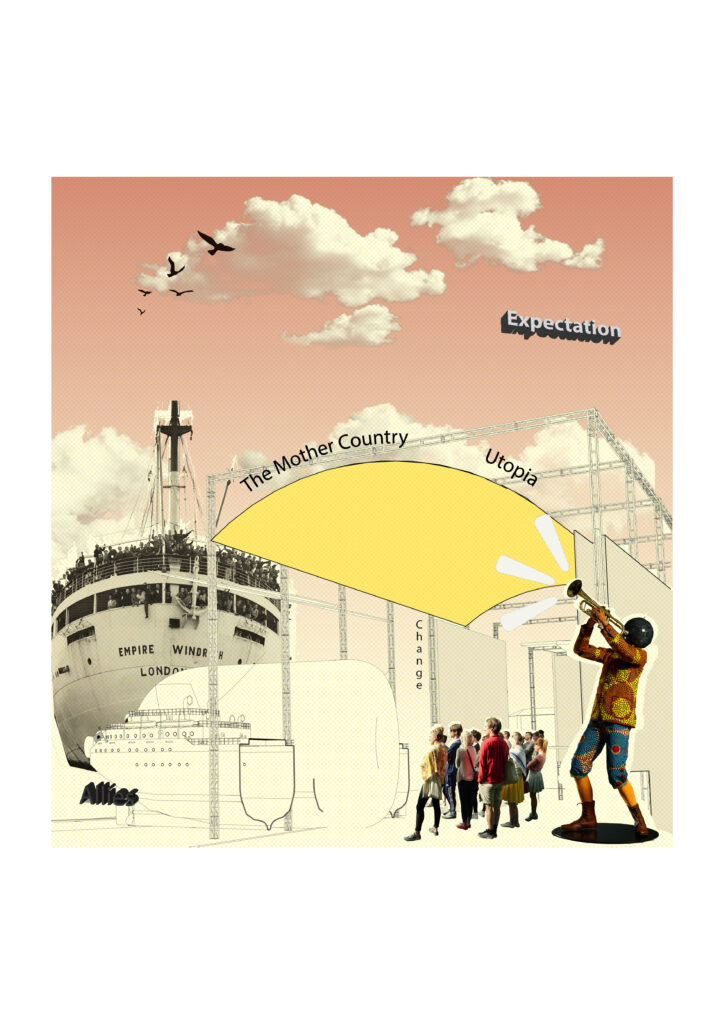
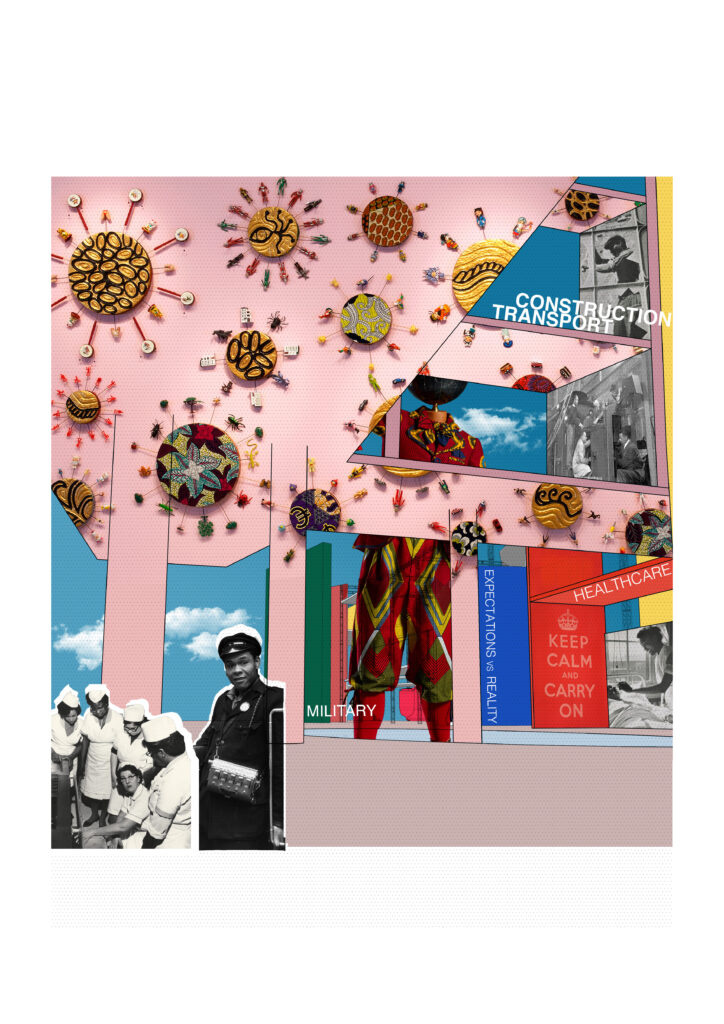
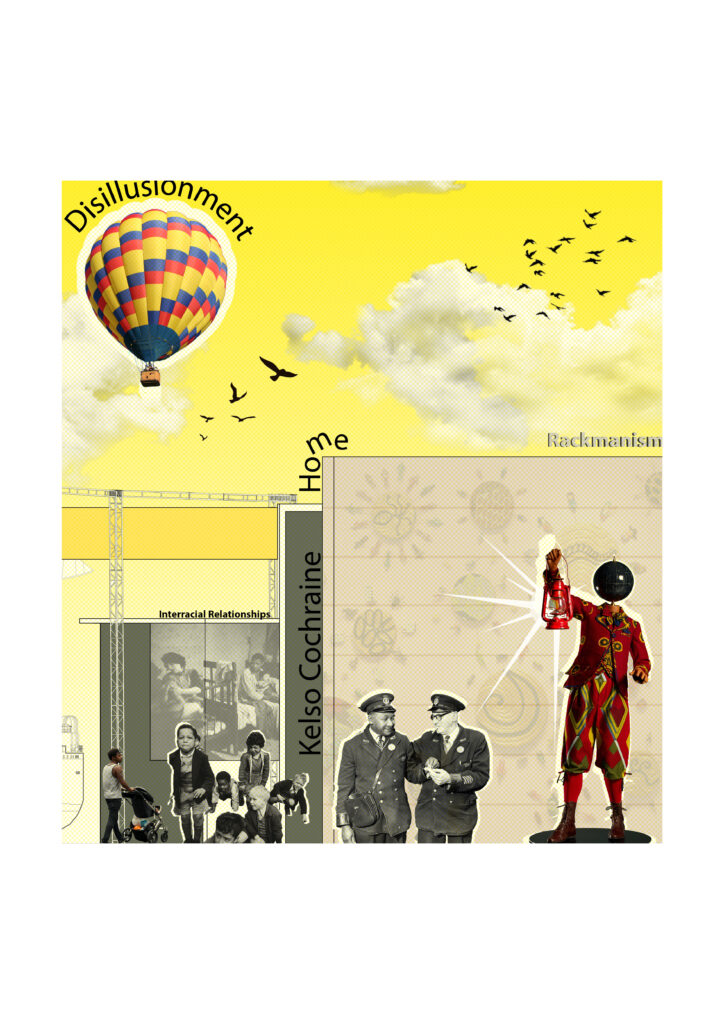
Selasi along with fourteen other practices were invited to create a paper model to sit on top of the cases in the V&A’s Architecture Gallery. These new models sit in dialogue with those underneath, building on this history to project into the future.
You can watch Sealsi’s top tips for students taking part in Design Ventura competition in the video below:
We are delighted that Sealsi will be one of our expert judges, helping to choose this year’s winning idea at the Pitching Day in March 2023.
-
Meet the Design Ventura 2021 Brief Setter – Yuri Suzuki
We are pleased to announce that the Design Ventura 2021-22 brief setter is artist and designer Yuri Suzuki.
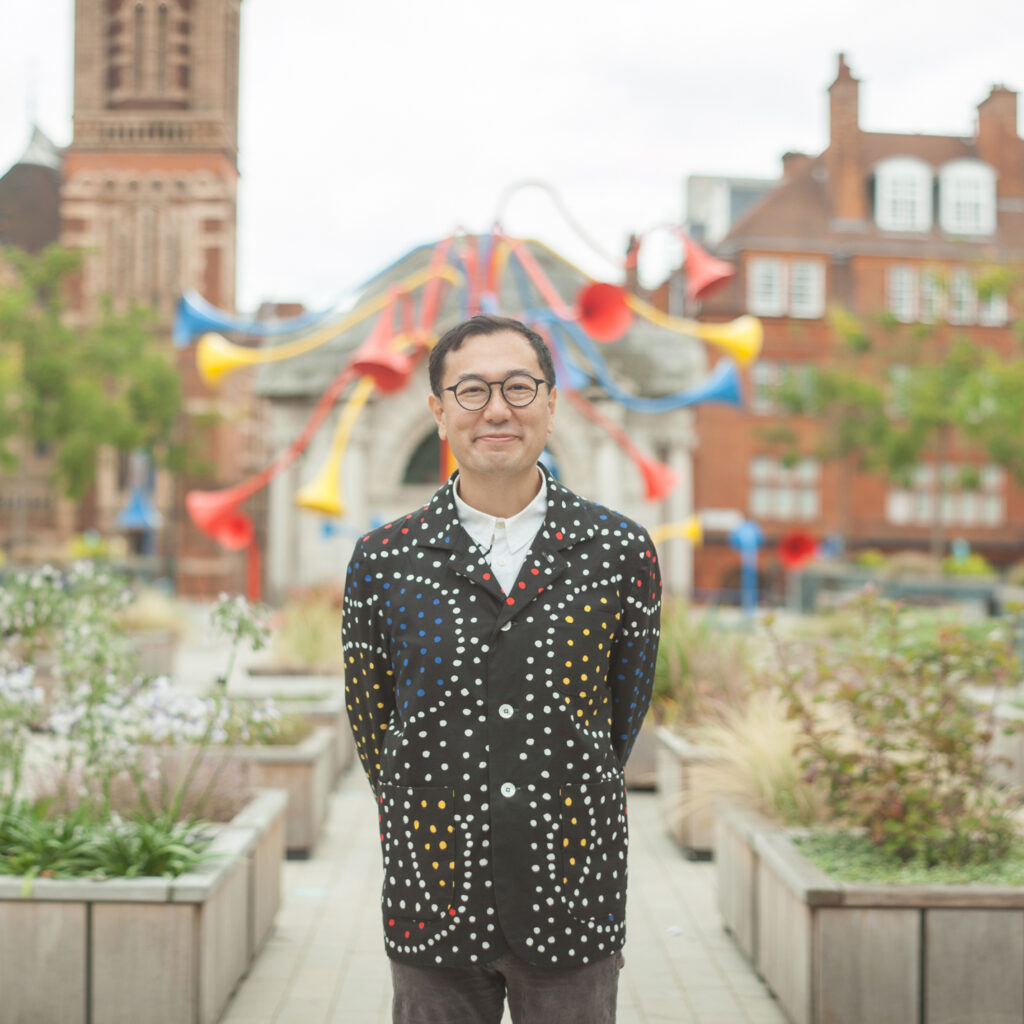
Yuri Suzuki, Photo Credit: Alberto Balazs Yuri Suzuki is a sound artist, designer and electronic musician. He is Partner at design firm Pentagram and works out of studios in London and Margate. His work ranges from small products to large scale installations. His practice uses sound and interaction to look at the relationship between people and their environments.
You can find out more about his work and the Design Ventura brief, by watching the brief video below:
You can also see Yuri’s most recent sound installation, Sonic Bloom, at Brown Hart Gardens in London until August 2022 (pictured below). Sonic Bloom is an interactive community sculpture with colourful horns that function as speaking tubes, through which members of the public can communicate with each other and listen to the sounds of the city.
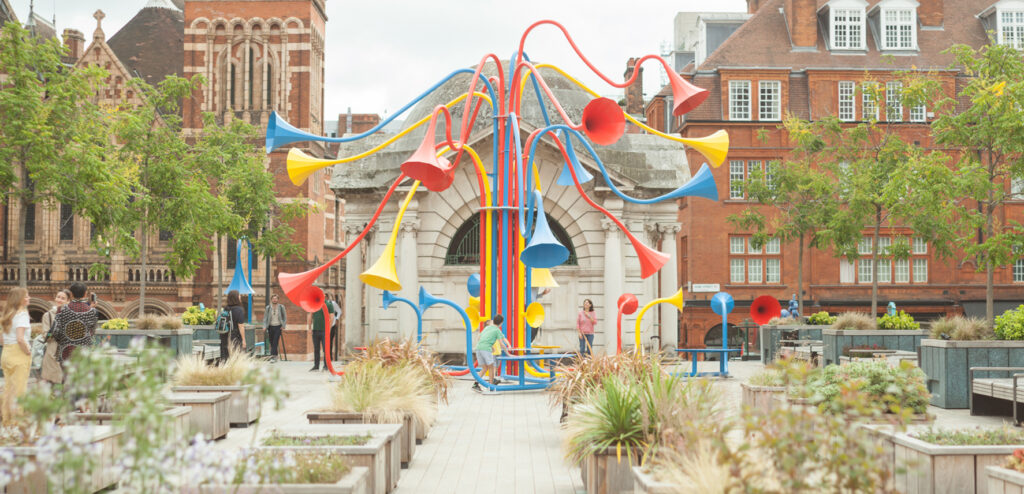
Sonic Bloom, Mayfair, London, Photo credit: Alberto Balazs Other recent projects include The Welcome Chorus, 2020 at Turner Contemporary and Sound in Mind, 2020 at the Design Museum. You can see a selection of his product design and other projects on his website.

EZ Record Maker, Yuri Suzuki, Photo Credit: Gakken You can watch Yuri’s top tips for students taking part in Design Ventura competition in the video below:
We are delighted that Yuri will be one of our expert judges, helping to choose this year’s winning idea at the Pitching Day in March 2022.
-
Meet the Design Ventura 2020 Brief Setter: Yinka Ilori
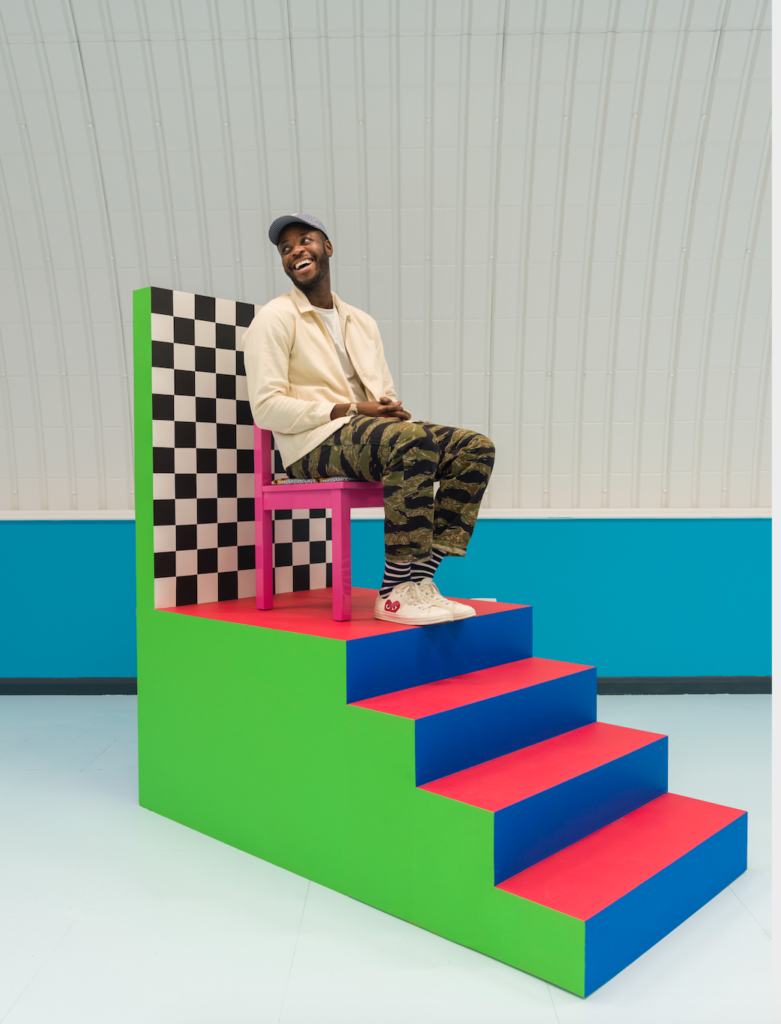
Yinka Ilori, photo credit: Andrew Meredith We are pleased to announce that the Design Ventura 2020 brief setter is artist and designer Yinka Ilori. Watch the brief video below:
Yinka Ilori is well known for his bold designs that use shape and colour to tell stories inspired by his British and Nigerian heritage. Yinka studied Furniture and Product Design at London Metropolitan University. He started by upcycling furniture before moving on to bigger projects, installations and collaborations.
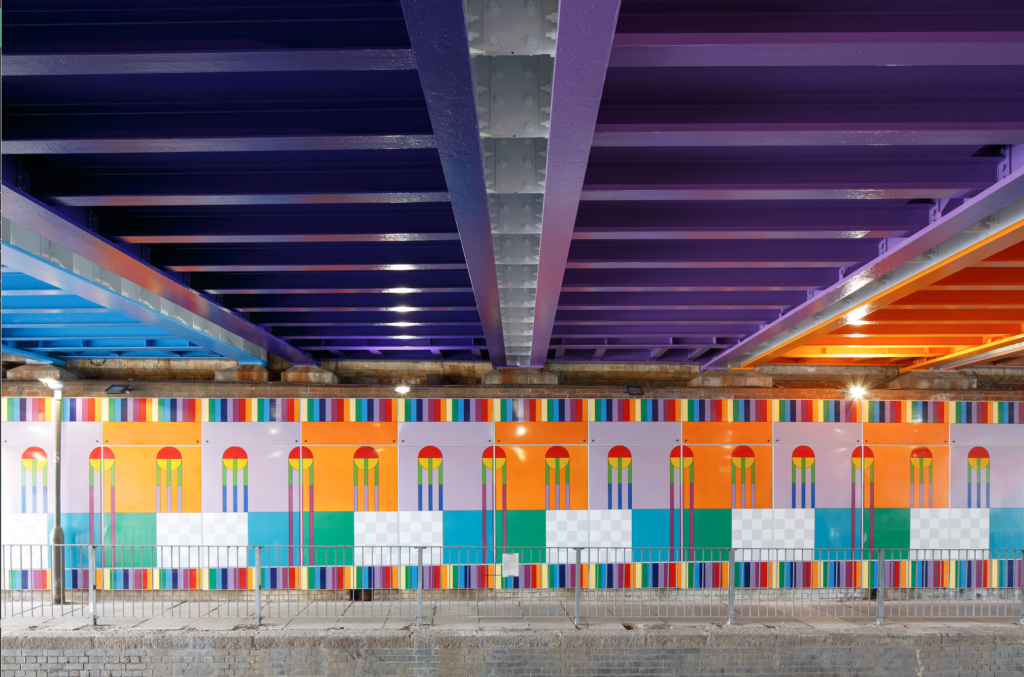
Thessaly Road Bridge, Happy Street, 2019, Photo Credit: Luke O’Donovan Recent projects include The Dulwich Picture Gallery Pavilion 2019: The Colour Palace, the Thessaly Road Bridge underpass Happy Street, 2019 (pictured above) and the Project Earth window display for Selfridges, London (pictured below).
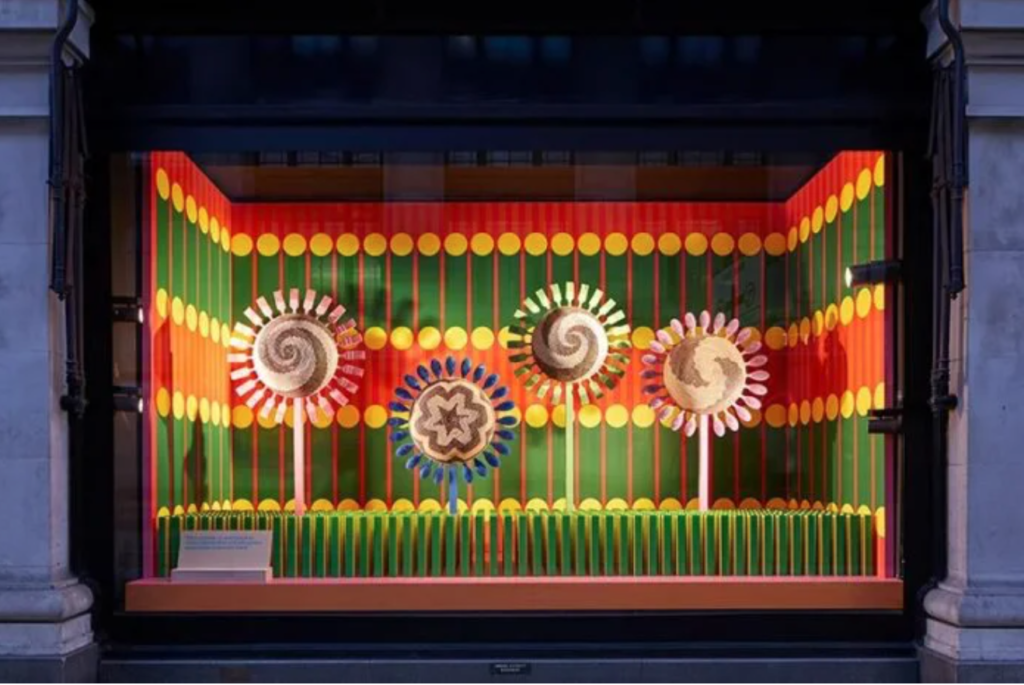
‘Project Earth’ Window display for Selfridges, London, 2020. Photo Credit: Studiostagg Yinka works with a team of architects and designers out of a studio in Nortth West London. You can see Yinka’s top tips for students taking part in Design Ventura in the video below:
We are delighted that Yinka will be one of our expert judges, helping to choose this year’s winning idea, at the Pitching Day in March 2021.
-
Meet the 2019 Design Ventura Brief Setters – Assemble
To celebrate the tenth year of Design Ventura, we are pleased to announce that our Design Ventura 2019 brief setter is Turner Prize-winning design studio Assemble, a London-based collective working across architecture, design and art.
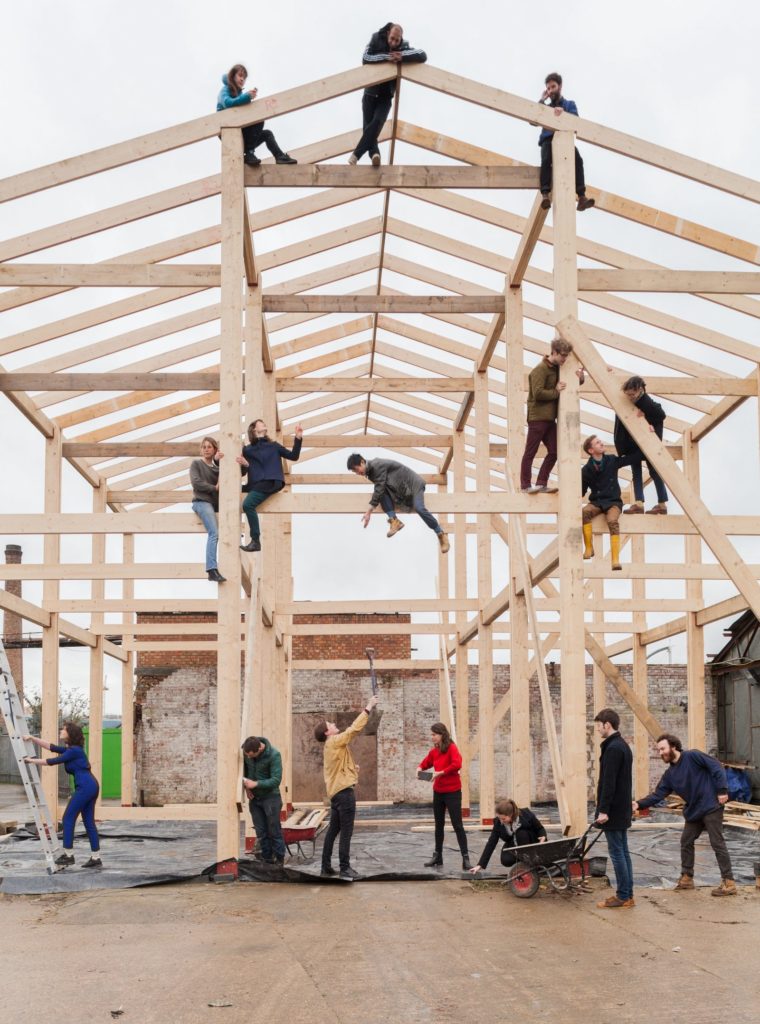
Assemble Assemble’s mission is to realize buildings, enterprises, and organizations that support creativity, collaboration, and citizen participation. Their social focus and unique approach was recognised in the receipt of the 2015 Turner Prize – the UK’s foremost art award.
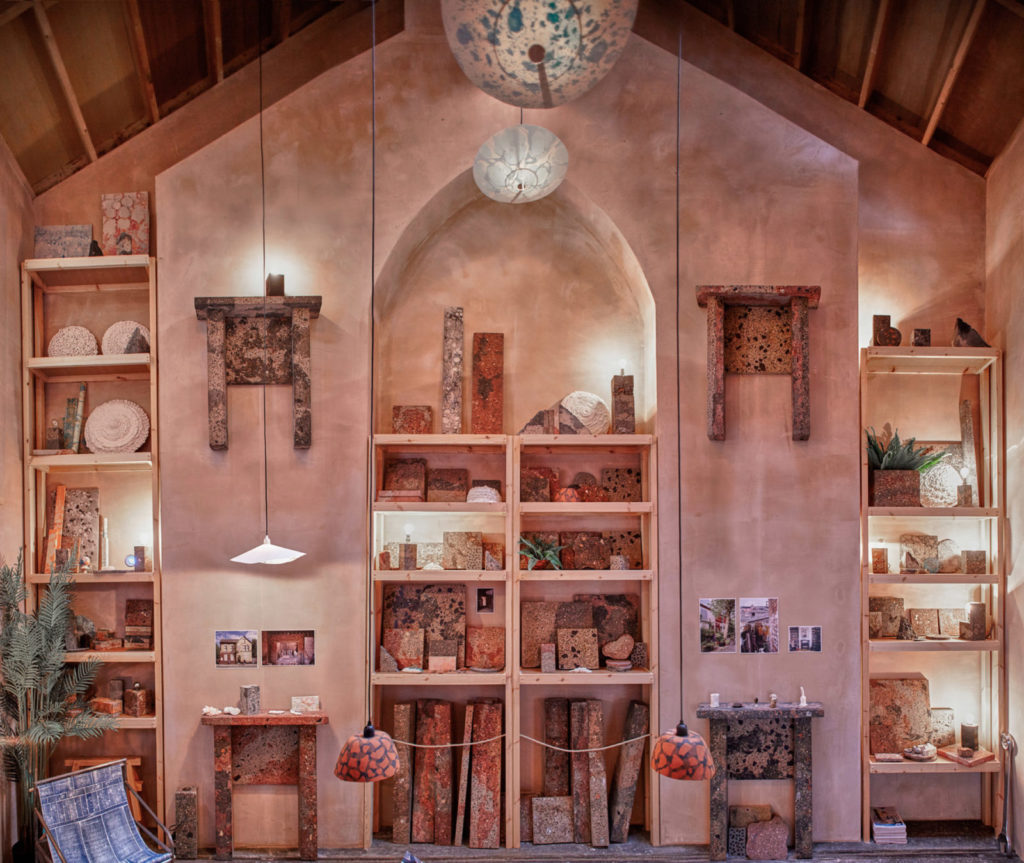
Assemble, Turner Prize Exhibition 2015 Paloma Strelitz, co-founder and partner of Assemble, launched the 10th year of Design Ventura with this year’s brief film:
Design Ventura 2019 Brief Film Paloma studied architecture at Cambridge University and the Royal College of Art. You can see her top tips for tackling the Design Ventura brief below:
We are delighted that co-founder Jo Halligan will be representing Assemble as one of our expert judges, helping to choose this year’s winning idea, at the Pitching Day in December.
-
Meet the 2017 Design Ventura brief setter
Anna Bullus of Gumdrop Ltd and my gumboots, is this year’s brief setter.
Anna left School to do a foundation course at Camberwell College of Art where she specialised in Three Dimensional Design and graduated with a Distinction. She went on to study Three Dimensional Design at the University of Brighton where her idea for the Gumdrop was first born. During her degree Anna specialised in plastics and material experimentation, which led to her developing an interest in recycling.

One day when walking home from University, Anna decided to pick up every piece of litter she could find, take it home and Google each piece to find out what happened to it once it became waste, and if there were other uses for each material. Inside an empty crisp packet was a lonely piece of chewing gum that soon became the brainchild for her Gumdrops. When Anna Googled ‘chewing gum’, to look at who was recycling it and what it was made from, she could not find anyone or anything that re-used chewing gum. She quickly realised that chewing gum was everywhere, and was a major litter problem that was going unnoticed, and with that Anna decided to give gum a second life.
Anna found herself in her final year at Brighton in a Chemistry lab experimenting with different materials, temperatures, resins, you name it she tested it. After hundreds of experiments she came up with a mouldable material which could be used to manufacture a bin which would collect chewing gum and subsequently be recycled to make new bins, the Gumdrop bin was born. Anna breathed a huge sigh of relief knowing that she at last, had a product to use for her final year project, but little did she know this was going to become her career.
After leaving University with a First Class Honours Degree, Anna gained experience as a Product Designer with Hulger, and Case Furniture as a Junior Product Developer in London. At the same time Anna was showcasing her ‘gumdrop bin’ project worldwide, this generated a huge amount of demand so much so that Anna decided to leave Case Furniture to set up her own company, to tackle the global problem of chewing gum waste.
Anna needed to develop her material into a product that was commercially viable, so she approached the Polymers Department at the London Metropolitan University. Here, she spent three years developing her material from recycled chewing gum, now known as Gum-tec. Gum-tec can be used in existing manufacturing processes such as injection and blow moulding.
With her material ready and a new Gumdrop bin designed and produced, Anna launched the Gumdrops in 2010 with Legoland being one of the first sites to take them on. The Gumdrops have now travelled far and wide across the UK. Gumdrop Ltd has attracted some fantastic companies like BAA, Royal Mail, Amey, ISS, Westfield Shopping Centres and Wrigley’s. The Gumdrop Bins are proving to be a great success and reduced gum litter by up to 46% in the first 12 weeks of use.
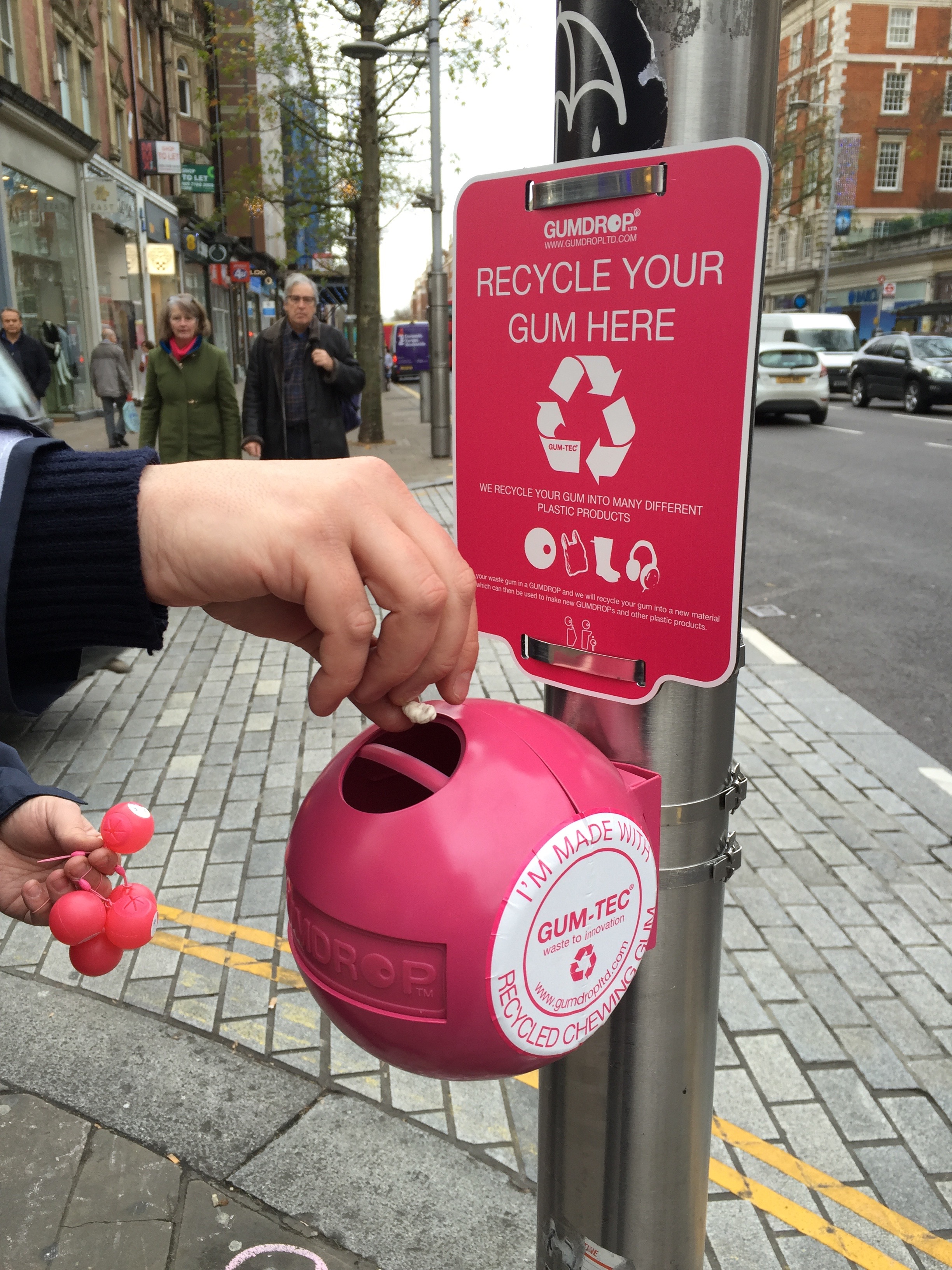
It is not just the Gumdrop bin that has developed and grown. Gum-tec is now being used to make other products such as Gum-tec Gumboots, dog bowls, rulers, frisbees and sports cones. This range of products is set to expand and grow in the future.
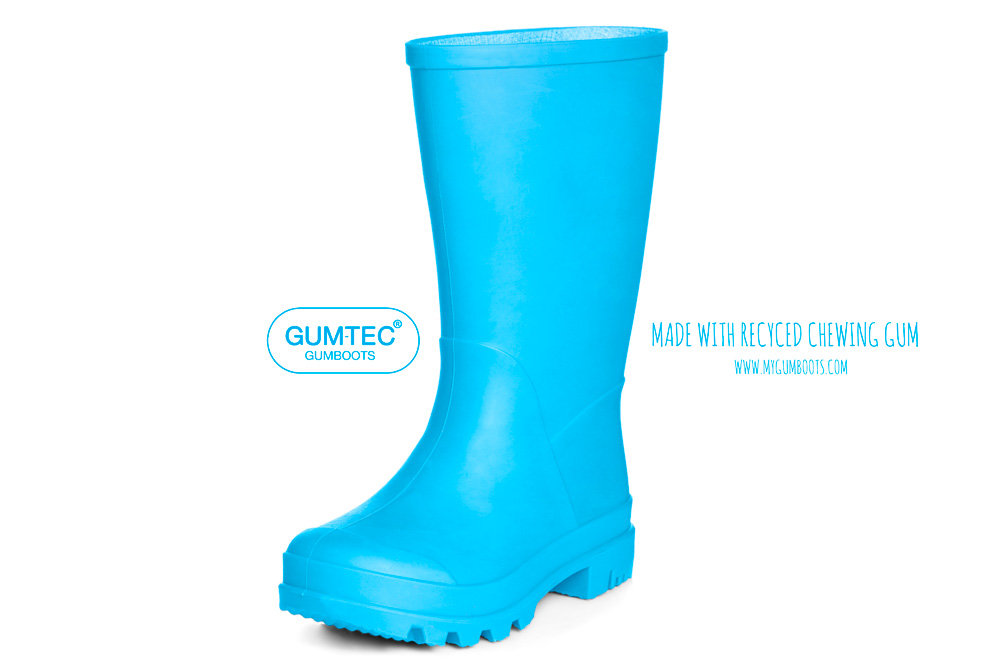
Anna has gone on to be nominated and win many awards for her innovative ideas, including being nominated in 2010 by the Financial Times for a place in the ‘Top 50 Women in World Business Ranking,’ in the same year she was also placed in Management Today’s ’35 Women Under 35 to Change the Future’. In 2011 she was selected as one of Kevin McCloud’s ‘Grand Designs Green Heroes’, and also selected as one of the ‘Top 20 Young Entrepreneurs’ by Start Your Own Business Magazine. In 2012 she won Tomorrow’s ‘Best Cleaning Product,’ was given a ‘Homes & Gardens Eco Designer of the Year Award,’ and was also placed in Wired Magazine’s ‘Europe’s 100 Hottest Startups 2012.’
Anna aims to deliver innovation on a global scale and continues to pursue her goals by educating and inspiring the public to reduce chewing gum waste.
The future’s green with a drop of pink.
-
Volunteering for Design Ventura
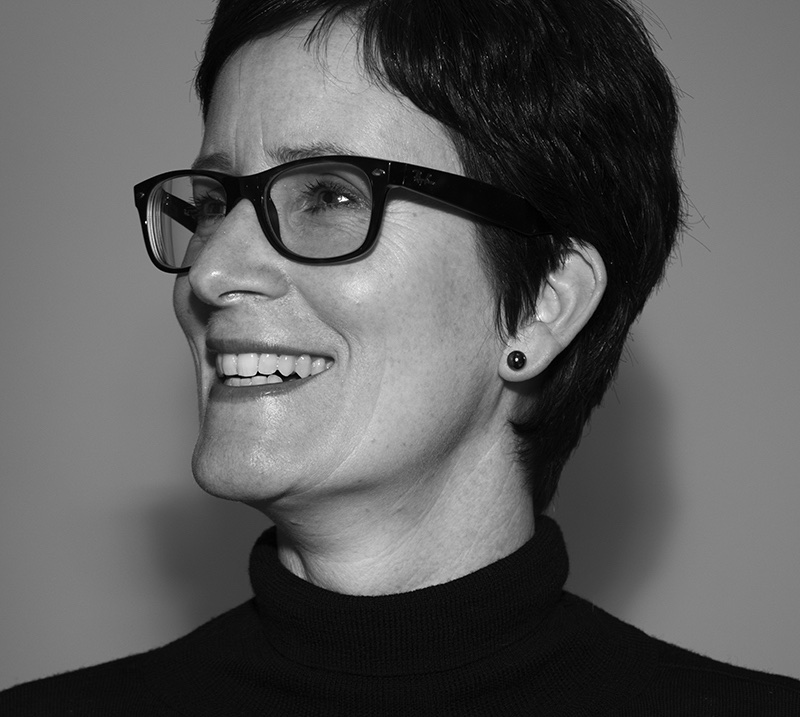 Hello, I’m Peta Miller, a dedicated graphic designer, working at Nash Design. I studied at Ravensbourne & Middlesex, and immediately after graduating I travelled to Australia to start work for a big group in Perth, called Hulme Dickson Springham. This is where I acquired valuable commercial experience before returning to the UK and joining Nash Design (then called John Nash & Friends). I have the pleasure of working with many super premium global brands, and I am devoted to turning great ideas into powerful design communication.
Hello, I’m Peta Miller, a dedicated graphic designer, working at Nash Design. I studied at Ravensbourne & Middlesex, and immediately after graduating I travelled to Australia to start work for a big group in Perth, called Hulme Dickson Springham. This is where I acquired valuable commercial experience before returning to the UK and joining Nash Design (then called John Nash & Friends). I have the pleasure of working with many super premium global brands, and I am devoted to turning great ideas into powerful design communication.I have been volunteering for Design Ventura since it was launched in 2010 and thoroughly enjoy being part of such an inspirational project run by a team of really committed people.
After each workshop, you leave feeling completely enthused. It really is great fun helping the students develop their ideas. The teachers have told me that the students really appreciate having ‘real’ designers to show their ideas to and get feedback. One boy in the winning team the year before last, was so motivated by the competition and full of ideas, I’m sure he’ll end up being the next Steve Jobs! I spoke to his parents at the award ceremony and they couldn’t believe the transformation in his character since taking part in the competition, they said he now points out to them objects that could be improved through design wherever they go!
I would highly recommend fellow designers, of all disciplines, getting involved, the amount of time you put in is totally up to you, and you get the satisfaction of knowing that you might have helped inspire future generations of designers.
Register to become a Design Ventura expert
See what Paul Jenkins from Triple Double has to say about volunteering for Design Ventura.
-
What it’s like to volunteer for Design Ventura
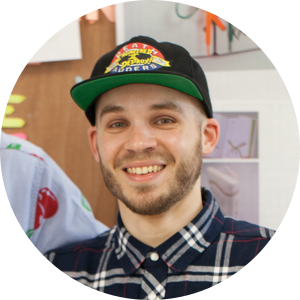
Hello, I’m Paul Jenkins, the Founder and Creative Director at Triple Double. We are a design studio who solve problems and get work done – creating, refreshing and fixing. Oh, and we love basketball. We work with clients such as adidas Originals, Airbnb, BBC, Ellesse, General Assembly, Mercari Europe, Nike, Thames & Hudson and Wellcome Collection.
My role involves leading on creative and design projects, working collaboratively with clients and their internal teams. We team up with specialist collaborators across design, illustration, photography, film and digital when needed as well. Before starting Triple Double, I held design, creative and art director roles at Selfridges, Mother London, U-Dox and Pentland Brands.
Over the years I’ve worked across sports and fashion brands, from campaigns and product launches to projects such as Nike78. It was a natural fit for my experience so when I was asked to be the design volunteer supporting the Independent school winner’s prize day in April 2017, I jumped at the opportunity.
The team from Royal Grammar School, in Newcastle came up with a fantastic product ‘Kit Control’, a visual checklist tool enabling the user to physically and mentally check off items of sporting clothing as they pack their sports bag. We’ve all been there and forgotten that important piece of sports kit so I think the idea is really great!
I presented my research and previous sport related projects then worked with the students to develop ‘Kit Control’ branding, packaging and point of sale concepts. It was great to see all the team members (including their teachers!) get stuck in to designing logos and packaging ideas, presenting their work for critique as we went along. We eventually tested the ideas out in the Design Museum shop, gathering customer and staff feedback, and it’s fair to say the students were pretty chuffed with the responses.
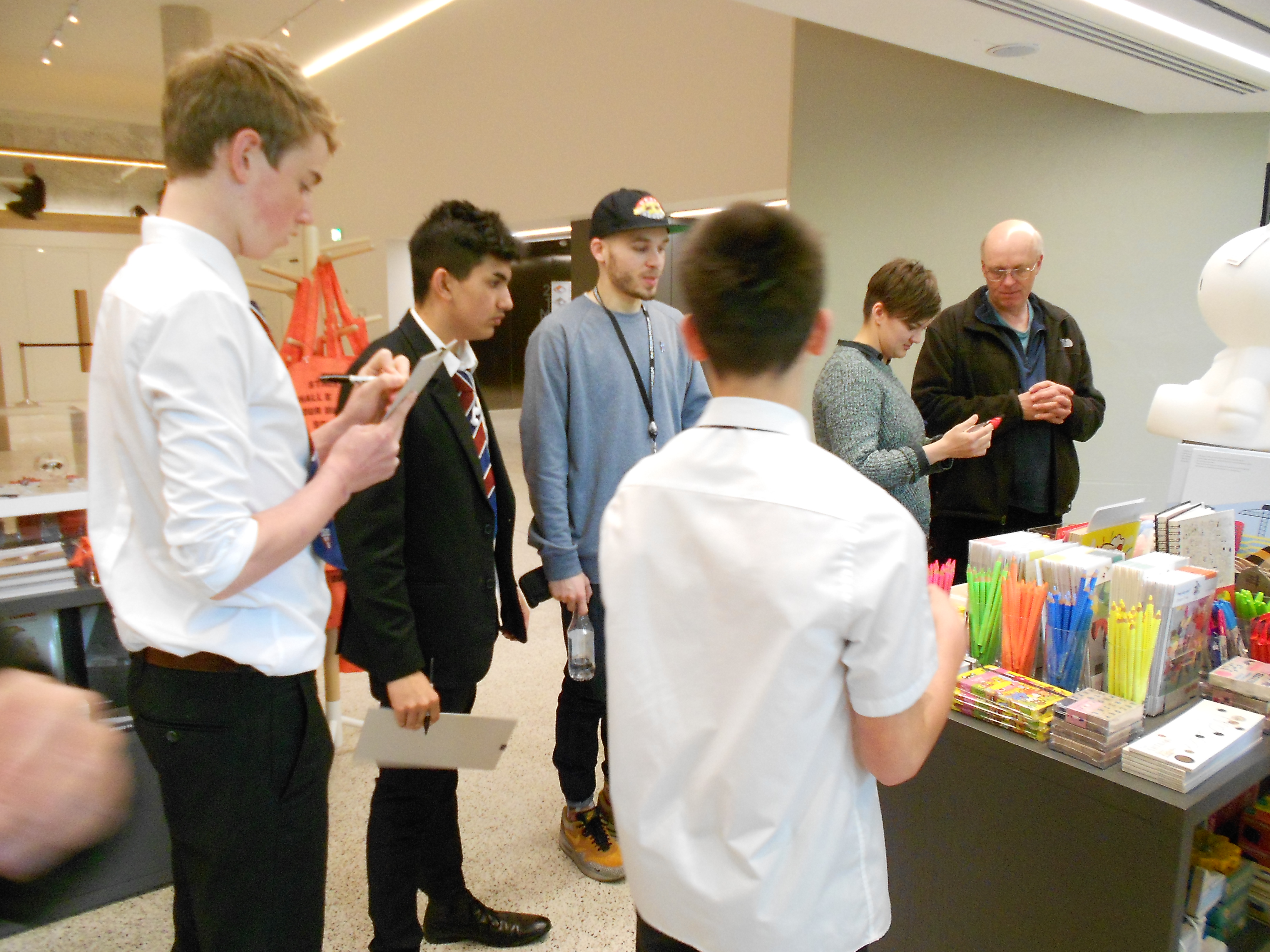
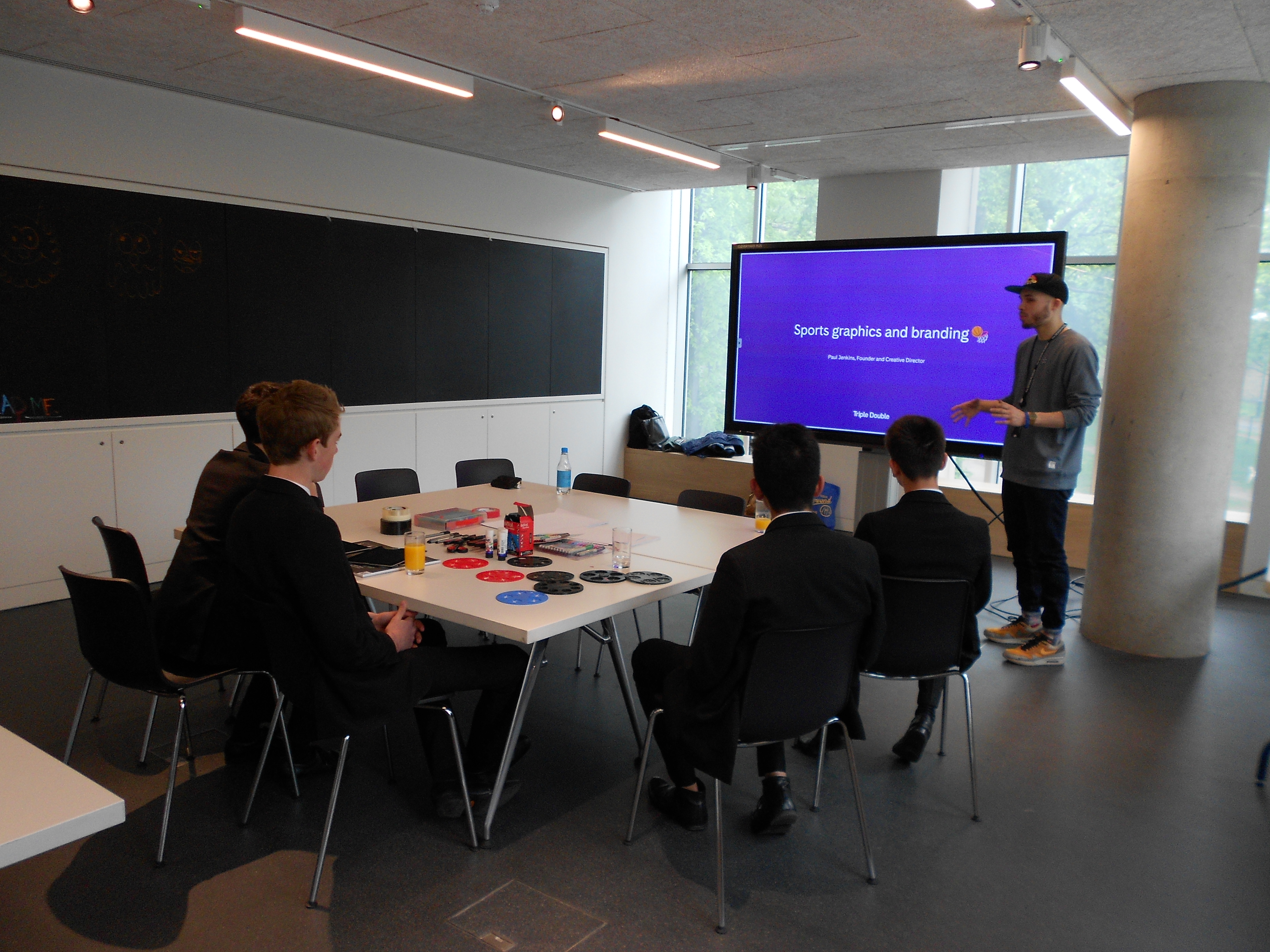
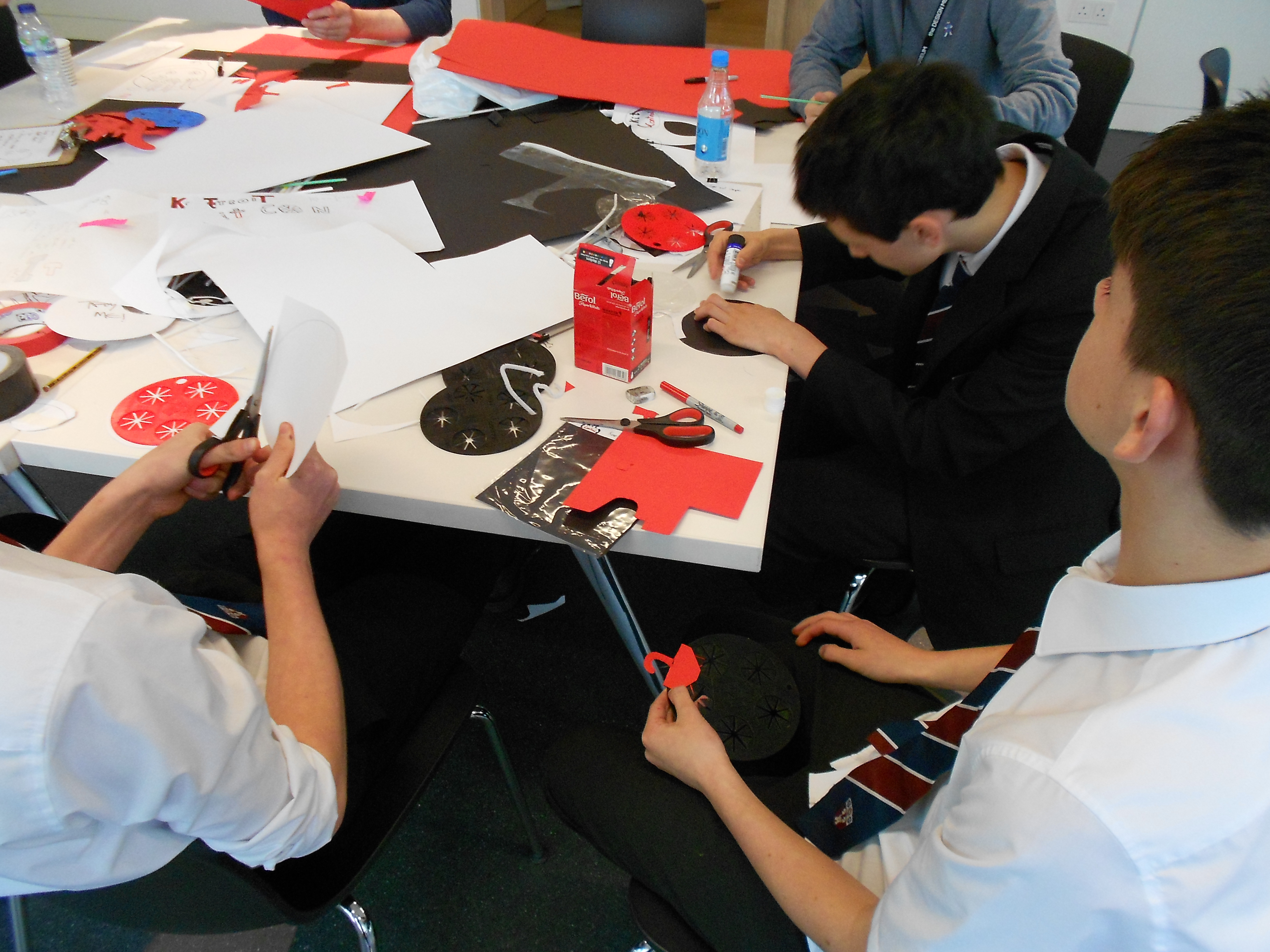
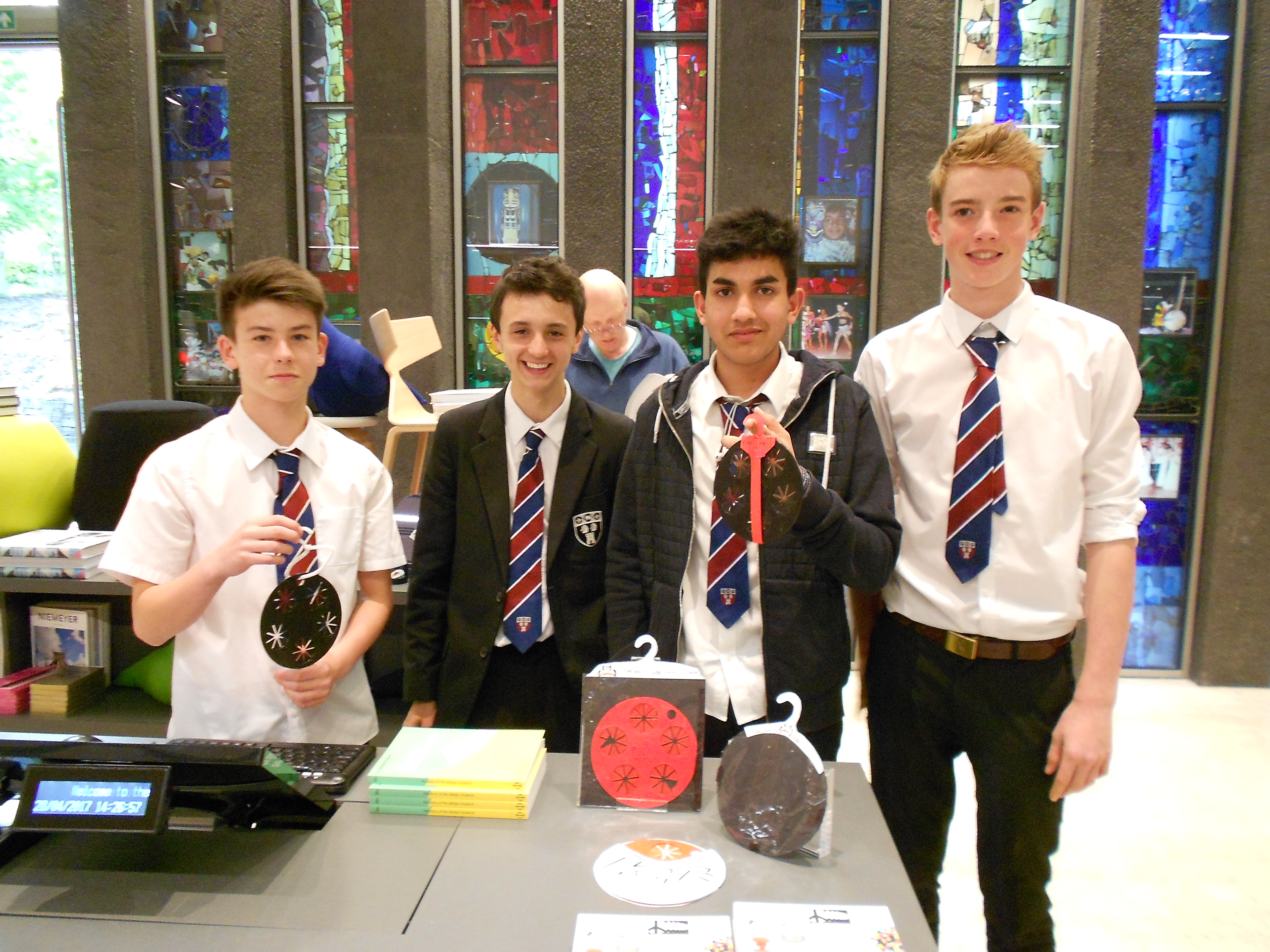
Both myself and the studio do a lot of work around design education, as we love to teach and mentor to help others gain skills. Being able to work with the students was inspiring, as it always is when working with the museum’s education team. Being able to work quickly and develop ideas and concepts with young people energises my own work, and every time, the results surprise me – the students are really that good and represent a bright future for the design industry.
I’m already looking forward to working with more Design Ventura students and the Design Museum team this year.
Register to become a Design Ventura expert
See what Peta Miller, from Nash Design has to say about volunteering for Design Ventura.
-
Design Ventura Summit Adventures
The Design Ventura summit “Design: the problem and the solution” was held on 29 March 2017. Its purpose was to bring together educators, designers, cultural providers and policy makers to discuss how they can ensure that young people are developing creativity, design thinking and employability skills to prepare them for future success.
The following extract is by Sarah Campbell, Head of Learning Programmes at the Victoria and Albert Museum and her take on the issues discussed.
Last week, the Design Museum hosted a one-day event as part of their Design Ventura(DV) programme, a ‘design and enterprise challenge for students in years 9, 10 and 11, supported by industry professionals’. The museum invited ‘DV stakeholders’ to participate in a series of talks and workshops exploring the following topic: ‘Design: the problem and the solution (and the imperative for 21C design education)’. It was a fascinating day, not least because a large majority of the audience didn’t work in museums or galleries. The delegates were predominantly teachers and designers, and we talked a lot about how their worlds intersect. The subjects we covered included: improving the relationship between education and industry; access to tech training for teachers; the rising trend of ‘design entrepreneurship’; and the skills that young people need for future employment. For this post, I’ve compiled some of my favourite interesting bits from the day – not an easy task as the whole day was made up of interesting bits – if the Design Ventura Summit had been a chocolate-chip cookie, it would have been made entirely of chocolate.
The Summit was particularly timely too. The day before, the new Chair of Arts Council England, Nick Serota, announced a new commission that will identify how young people benefit from an arts education and strategies for improving current provision. Hopefully, they will build on the myriad of existing reports on the subject, not least ImagiNation: the value of cultural learning, commissioned by the Cultural Learning Alliance and published only a few months ago. The Summit also coincided with the day that the UK Government triggered Article 50, marking the official beginning of divorce proceedings from the European Union. This particular cloud cast quite a long shadow over the event, and the potential negative impact of Brexit on the creative industries was raised a few times. And finally, as I was eating my breakfast earlier that morning and listening to the radio, I heard the news that UK schools are working with ever-diminishing budgets which will result in £3 billion cuts by 2019/20. My first thoughts were with teachers and how grim the work of head teachers will be to balance the books. My second thoughts were, naturally, concerned with museum and gallery education. I suspect school trips will be the first item cut from school budgets (who can blame them?) and this will leave our current model of schools’ provision, focused on site visits, high and dry. It doesn’t matter how great our museum learning programmes are, they ain’t worth much if schools can’t afford to get to us.
With all of these issues swirling around in the background, it was useful to take a design perspective on the confluence of education, policy, and the creative industries. NESTA have been very active in this area and have produced a number of useful reports, including:
- The Fusion Effect (2016): this is NESTA’s take on the STEAM agenda, looking at how the arts and sciences can work together more effectively;
- Creativity Vs Robots (2015): how can anyone resist a title like that? This report looks at the future of jobs and what aspects of work are likely to become automated. A recent Guardian article, ‘Science classes won’t future-proof our children. But dance might’, made reference to PricewaterhouseCooper’s prediction that 30% of British jobs will be lost to automation by the 2030s. Fortunately, artificial intelligence still can’t compete with our human creative capacity, so we’ll remain one step ahead of C3PO for a bit longer.
- Solved! Making the Case for Collaborative Problem-Solving (2017): another title that speaks for itself. ‘Problem-solving’ was definitely one of the day’s key words: it was used as a shorthand definition of design; and it was also name-checked as a 21st century core competency, an attribute valued by employers across a range of industries.
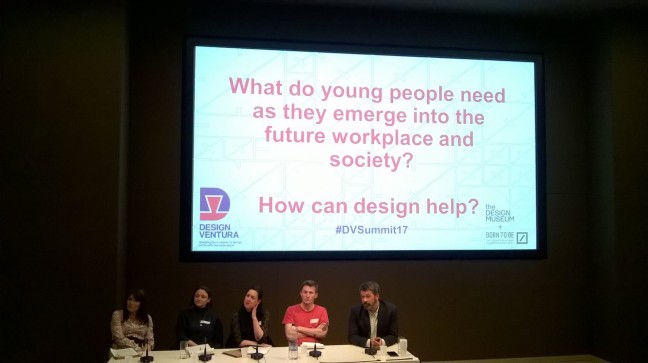
Brexit and the EBacc – a pairing that sounds more like a novelty music act from the 1970s than a confluence of misfortunes – were subjects that couldn’t be avoided. The Government’s Industrial Strategy Green Paper came up in discussion a few times. Published in January, it sets out planning for the UK’s economic future once we have left the EU. Organised around 10 pillars, the ‘developing skills’ priority was considered pertinent to design education and its value to the economy. One speaker also mentioned Brexit Design Manifesto, produced by Dezeen magazine, which is worth a look.
The sharp decline in pupils studying Design and Technology at GCSE level was a particular cause for concern during discussions. The Design and Technology Association (DATA) spearheaded a campaign last year to raise the profile of the subject. Their short film What is Design & Technology – and why do we need it?, made a connection between the investment in D&T in the 1990s and the pay-off over the following decades as those pupils then thrived and built careers in the creative industries. We risk cutting off the pipeline of new talent when design (either through D&T or Art & Design) is cut from a child’s education.
So far, so sadly familiar – the drop in D&T has been a topic of discussion for some time now. What I found more interesting was hearing another perspective on the issue. Holly Donagh from A New Direction framed the EBacc discussion in relation to inclusion agendas. Pupils who graduate with at least five GCSEs will go on to have greater social mobility and more career opportunities than those who don’t. The aim of the EBacc is to get 90% of pupils achieving five GCSEs; whereas the current figure is closer to 35-40%. Living in my leftie echo-chamber, I only ever hear about how awful the EBacc is. Of course it makes sense that those on the other side of the fence also want a high quality education for the next generation – we just have very different views on the role of art and design in achieving that (I should add that Holly was presenting another perspective for the purposes of a group discussion, rather than arguing against design education). Both sides in this debate are deeply entrenched and Holly’s comments made me realise that a greater insight into each other’s rationale would surely help find some middle ground.
And finally, there was plenty of discussion around career pathways for young people. It’s one thing to be at school, and it’s another thing to be established in a career – but getting from A to B is incredibly daunting when you’re 16 and don’t know what you want to do with your life. A huge range of jobs rely on creative skills, and the creative industries are stuffed with a variety of careers, but these opportunities are not well-known. If young people (and their parents) were better informed about what was possible and available, the value of design education would be better understood. The Sorrell Foundation has created the online resource, Creative Journeys, to meet just that purpose. And I should also mention Creative Quarter and Making It are two large careers’ festivals for young people that the V&A’s Learning department run each year.
Another of NESTA’s projects involves sifting through a mountain of online job advertisements to identify the careers that require creative skills. They have sifted through 33 million online ads (promoting UK jobs, dating from 2011-16) and identified 12,000 unique skills. From this data, they have arranged creative skills into five broad categories – Tech, Support, Selling, Creating & Designing, and Teaching. The final resource is still being tested, but it will ultimately provide an online facility whereby a young person can identify their skills and interests and match them to a range of possible career options.
The jobs-market isn’t what it used to be. My own career pathway – from administrator to assistant education officer to education officer to management – feels very old-fashioned when I read the CVs of twenty-somethings, dominated by internships, volunteering, placements and short-term contracts. A patchwork of experience now seems to be the norm. Perhaps not surprisingly, initiative and drive are key attributes in this working climate, and the top buzzword of the day – entrepreneurship – is becoming increasingly important.
Julio Terra from Kickstarter gave one of the keynotes and offered great insights into this new world of work. He recommended designer Craighton Berman and his interest in ‘design entrepreneurship’, championing how designers can work more independently and sustainably. Julio also mentioned ‘D2C’, the designer-to-consumer model, made possible through digital technologies that cut out the middlemen of distribution. And of course Kickstarter itself is changing the game for how new products are backed and launched. I can’t quite believe the company was founded as recently as 2009 – it feels like it’s always been there. In this model, storytelling and narrative have usurped conventional marketing. Young designers are attracting backers through engaging and personal short films to promote their work, made using readily available software.
This brave new world of employment has a rich assortment of pitfalls and opportunities, many of which – for good and bad – are the result of new technologies and a splintered job market. While we need new thinking around education and training to keep abreast of these rapid changes, the path to success remains the same – find something you’re passionate about, word hard, network, and be good at what you do.
Source: https://kiwilooseinmuseums.wordpress.com/2017/04/03/design-ventura-summit-adventures/
-
What do young people need as they emerge into the future workplace?
The Design Ventura summit “Design: the problem and the solution” was held on 29 March 2017. Its purpose was to bring together educators, designers, cultural providers and policy makers to discuss how they can ensure that young people are developing creativity, design thinking and employability skills to prepare them for future success.
The following extract is by Harry Trimble, Designer for Service Manual and Patterns Government Digital Service, on his take on the issues discussed.
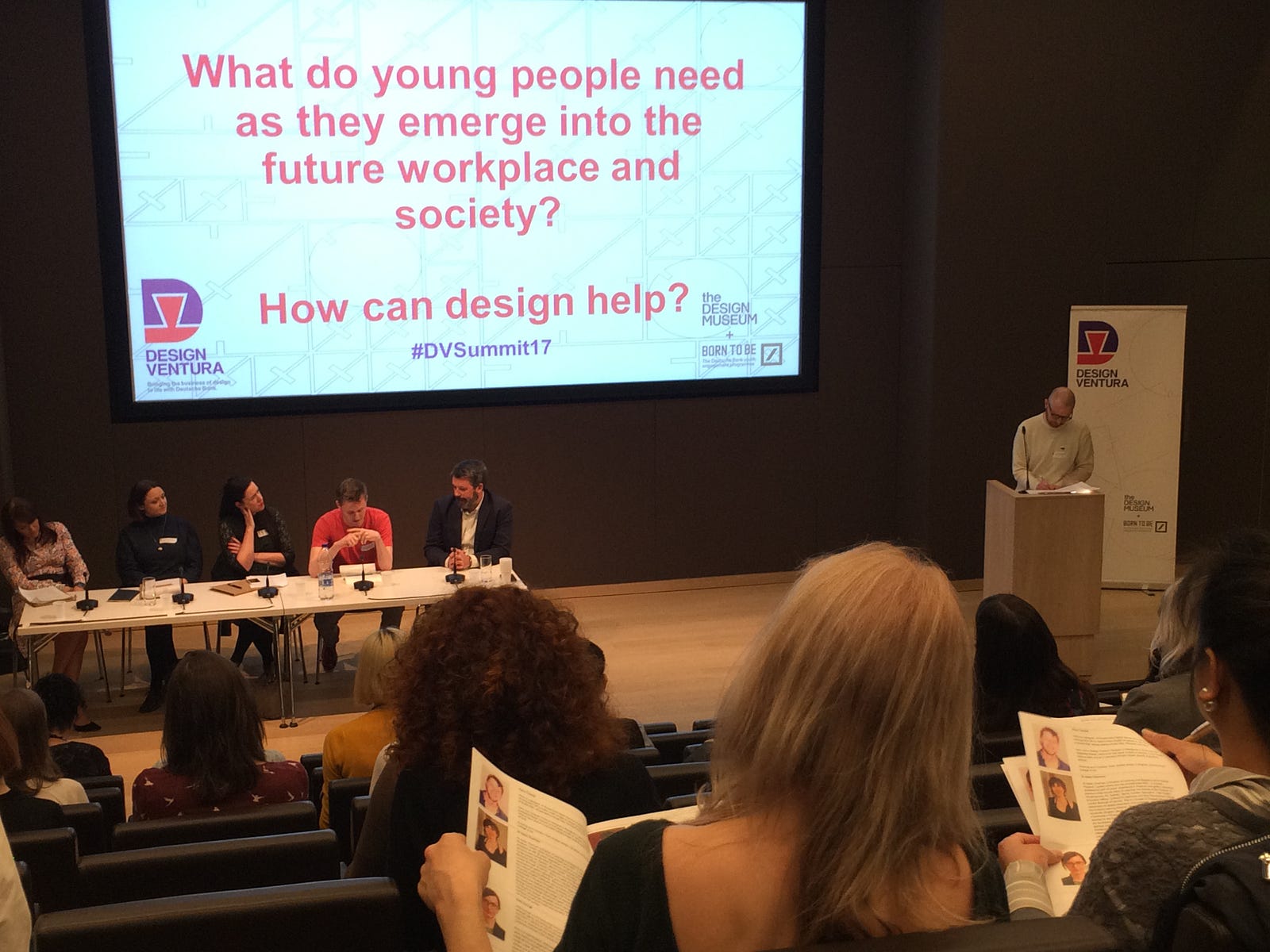
I spoke at the Design Museum on Wednesday, for its design education conference. I was in a panel with some nice people, doing interesting, important things. We spoke for 5 minutes each, then answered some questions.
Here’s what I said:
Hello. I’m Harry. I work on GOV.UK, designing public services.
I only got asked on Friday to come speak here, so apologies if what I’m about to say sounds a little disorganised, raw or even ranty.
Also I’ve framed what I’m about to say in the context of education, rather than about “design”, as that seems a little specific and design is just about problem solving anyhow.
So to answer the question we been given: ‘What do young people need as they emerge into the future workplace, and society? How can design help?’
First we need to focus on learning, not institutions.
From schools to universities to inspectors to workplaces. Institutions are obsessed with themselves and the things they care about. Needless, formal things like testing, exam results, assessment reports and performance reviews. Which are there to make institutions look good. Let’s be honest that doesn’t meet the needs of their users.
Even despite all this measurement, we don’t measure the things that do matter in learning. The outcomes of which can only be observed over years and decades, not weeks and months. For example schools success should measured not by exam results, but how they’re students are doing years after they leave. What jobs they do. Can they adapt to new jobs. How happy they are.
The best learning now is happening on the fringes of institutions. In school code clubs, meet-ups and competitions like Design Ventura. Learning to work in teams, think through making, test ideas and explain your decisions. All things that will help in most careers in the future, not just design. So the more young people who are able and comfortable to do this, the better.
This learning is less formal. It’s more relevant. It’s more agile. It exists to meet young people needs, which institutions are either too slow or unaware to do.
This takes me onto my second point;
Stop teaching people things computers can do. I’ll repeat myself. Stop teaching people things computers can do.
So I don’t mean reading, writing, maths and increasingly coding, which are foundational skills for all learning.
But much of the formal stuff we teach young people are things computer can and will do better: recalling facts and performing standardised processes. We are preparing people for careers that will, if they aren’t already, being automated away. Automated away into history.
Also just as an aside, many of the jobs that are being automated are ones people hate doing anyway.
What we should be doing is teaching young people problem solving, question asking, collaboration, empathy and the ability to learn new things continuously. Things which computers on the whole suck at. Much of our prosperity in the future will be depend on how many people can do jobs computers can’t.
Much of the education systems we have now is still Victorian. As journalist Tom Goodwin said ‘It’s staggering to me as to how much the world has changed, and how little education has.’
We need education for the future. It needs to look like this.
Education will be of the internet, not just on it.
The internet is not about computers, it’s about people.
Education in the future will fully embrace the culture of the internet: it will be more open. More collaborative. More distributed. And more adaptable to change.
This is already happening in some places.
Teachers are collaborating on lesson plans over Facebook. They are meeting on things like Design Ventura’s teacher training, where they can share their enthusiasm about teaching design. This point is the super important: the world can never have enough enthusiastic teachers.
Having networks of enthusiastic design teachers is a powerful thing. Bringing people together around a shared interest is a powerful thing. The internet is great for this.
Another example is Code Club, where thousands of volunteers are teaching kids to code. If you want to set up a Code Club, all you have to do is go online, download the tools and find a room to host it in.
Because it’s a centrally-run resource it can be updated regularly. Meaning the things the children learn is as up-to-date as possible. The internet is great at this too.
Recently at work, we ran a day for degree students interested in design in the public sector. Students came from London, Glasgow, Copenhagen, Berlin and even Buenos Aires. This took nothing more than a blog and Eventbrite to organise.
These examples hint at what education can and needs to be. Hands-on. Project based. Networks of enthusiastic teachers. Open-source curriculums adaptable to change. Backed up by skilled volunteers. Enabled by internet culture and infrastructure.
The world is fast and not short of problems. Education can and should be equal to it.
Thanks.
Source: https://medium.com/@HarryTrimble/design-ventura-summit-241ec7cf5c93
-
Designer Profile: Edward Barber & Jay Osgerby
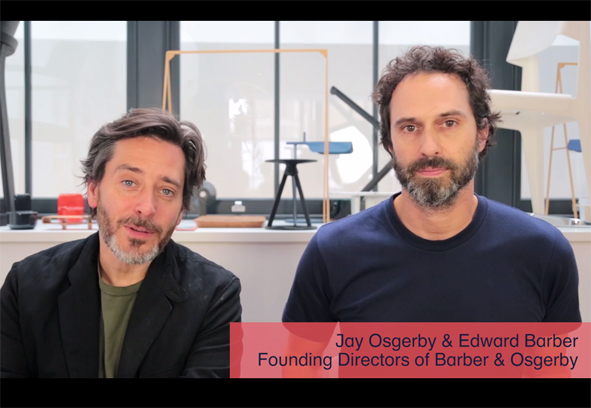
For our first Designer Profile of 2015 we are looking at our great brief setters for this year Edward Barber & Jay Osgerby.
The Barber Osgerby partnership was formed while the pair were studying at university and they have been collaborating ever since. Their work shows how simplicity in design and materials can make for a winning product.
Their award-winning design for the Olympic Torch had to be both beautiful and practical. Not only is it the potent symbol of the Olympic Games, but it also had to be able to stay alight through all kinds of weather conditions.
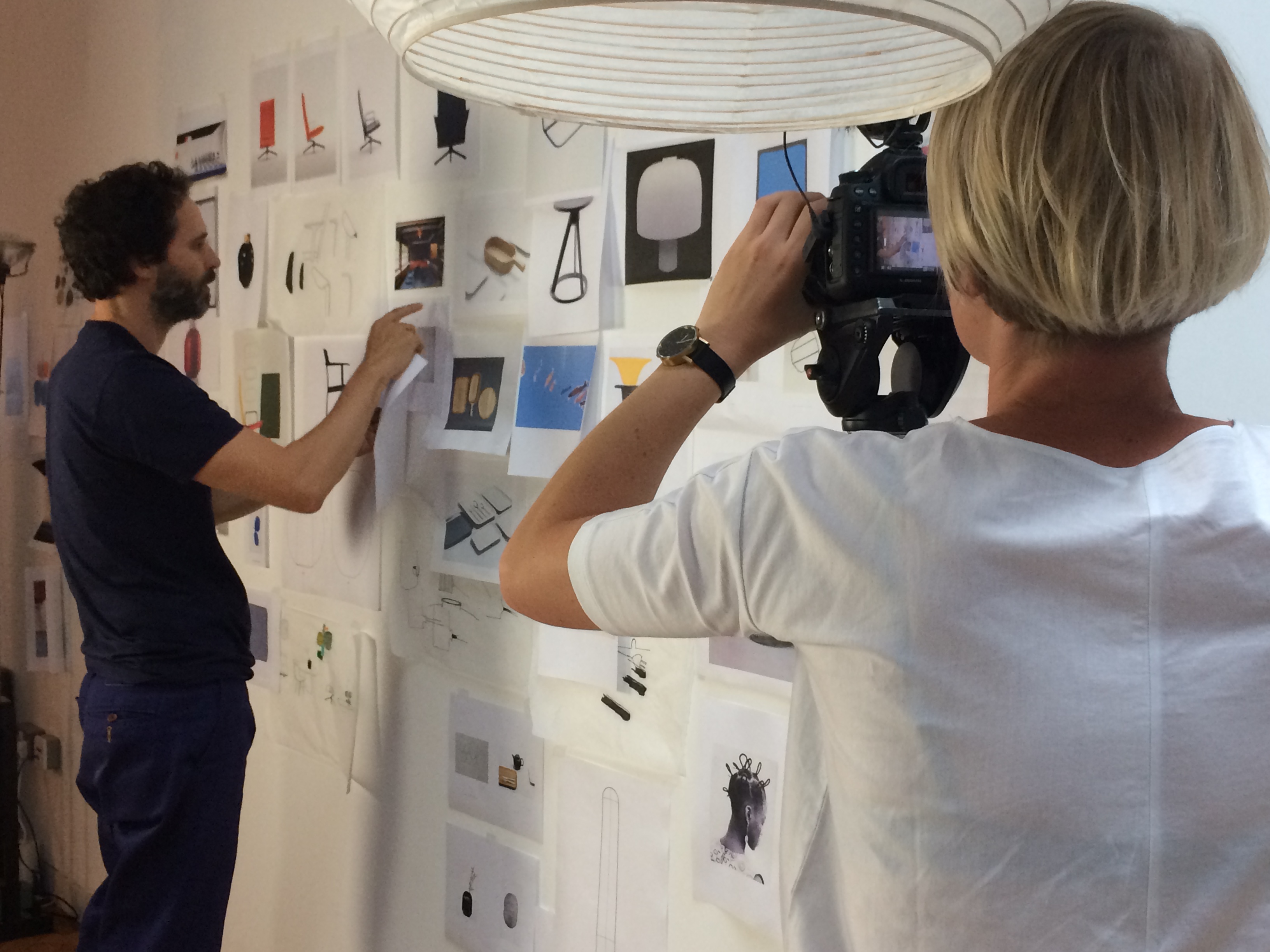
Barber & Osgerby curated a Design Museum exhibition call ‘In the Making’ which halted the manufacture of familiar objects to make you stop and think about how they are made, what processed and materials go into making an object and also what waste is created.
You can also find Barber & Osgerby products in the Design Museum Shop, maybe your Design Ventura idea will on sale next to them.


